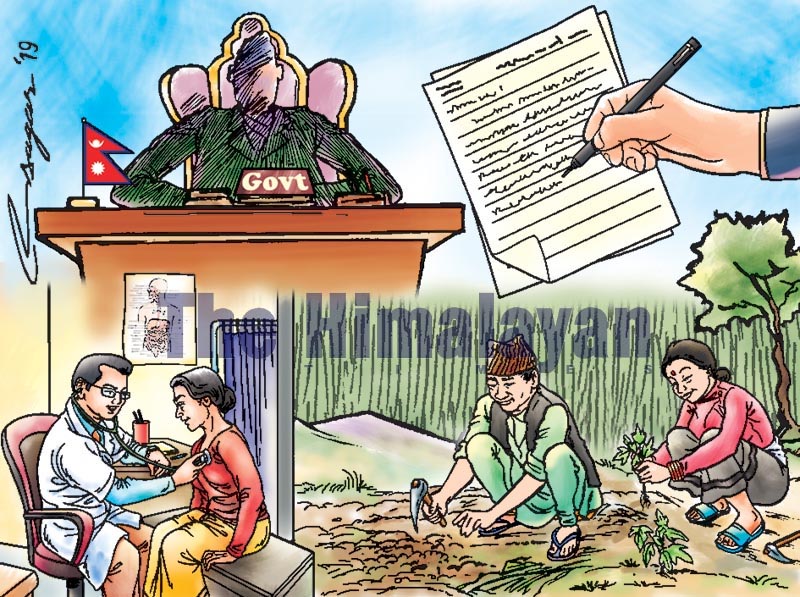Research and development: Time to have a robust plan
As a long-term plan, the government can have two types of institutions: one for long-term strategic research (university, research council) and similar local institutes to deal with immediate day-to-day problems, that is, applied R&D
For too long, Nepal has lagged behind the rest of the developing world in the field of research and development (R&D). The lack of investment is having a negative impact on our ability to drive productivity, stimulate economic growth, and is draining our knowledge pool to overseas economies that place high value on R&D. Other advanced societies gladly accept our intelligence and profit from the research, selling it back to poor countries like ours. It’s a vicious cycle akin to a welfare state. The longer it continues, the greater the generational influence. It is time for change in this space.
Nepal missed out on a share of an estimated $2.19 trillion forecast to be spent on R&D in 2018 - an increase of 4.1% over the previous year. The USA, Japan and the European economies have dominated global R&D investment. But Asian countries like Israel and South Korea have also entered this space and are showing promising results.
Education, agriculture, animal husbandry, pharmacy, health and energy are the priority areas of
investment for most
developing nations like Nepal. Much of this investment comes from borrowings, placing downward pressure on the ability to repay that debt. With their citizens living in abject poverty, it becomes increasingly challenging to invest in science and technology.
Low funding for research in these countries comes down to two primary reasons. First is the challenge of meeting and overcoming the basic humanitarian needs of its citizens, leaving insufficient financial resources for research. Second is the attitude of minor yet influential political parties that perceive R&D investment as a bridge too far, and lack the vision and courage to broaden their perspective.
When countries invest substantial sums of money in cutting edge research, a fundamental question arises. What will be the impact of such investments on those poor communities? How will they benefit? Many developing countries invest less than 1% of their GDP on R&D. This limited budget allocation is insufficient to acquire cutting edge equipment and technology. As such, it would be rational to focus on local research tools to address the immediate needs, gaining benefit of comparative advantage.
In today’s world, there is a shift of priority from basic research to applied research due to the funding bodies’ stress on the latter. They believe that basic/fundamental research does not pay attention to real-world problems, which might be true in the case of developing countries but not the developed world. Basic research, in the long run, saves money by promoting a superior scientific way of application. Pure science leads to the discovery of new methods, whereas applied science improves those methods. In this sense, there should be equal or greater priority to basic research. However, given the limited resources, it is more rational for developing countries to add to the already discovered methods by the developed countries.
But then, research done by the developed countries may not exactly meet the needs of the developing countries. For example, the focus of study of the developed countries may be on rich people’s diseases, or non-communicable diseases, such as cancer and obesity, whereas hepatitis, cholera, tuberculosis and AIDS are the major health problems of the developing countries, like Nepal. R&D in developing countries should focus on the priority problems of the society and ways to address them using science.
Emphasis should be laid on agriculture, renewable energy resources, biodiversity and geology. However, most researchers and funding agencies fail to grasp the understanding of the surrounding environment, making them unable to translate the research outcomes whilst pear-shaping the likelihood of these outcomes to be accepted and adopted in society.
Developing countries can validate the findings from pioneer research done by the developed countries in their locality. While doing so, they can overcome the limitations, which will prove profitable.
Developing countries must also carry out some basic research applicable to their locality, such as, understanding the soil bacteria of the locality, which can later be applied to agricultural studies, or understanding the genetic composition of local animal breeds. This will provide the opportunity to develop one’s own or modified new technology more suited to one’s situation.
As a long-term plan, the government in Nepal can establish two types of institutions: one for long-term strategic research (university, higher learning centres, research council) and similar locally-based institutes to deal with immediate day-to-day problems, that is, applied R&D. For example, in the context of Nepal, universities can work on the identification of new compounds for the treatment of certain diseases or development of new varieties or breeds of plants or animals, while local institutions can explore those compounds or varieties to evaluate the outcomes in their situation.
Nepal should act now before it becomes too late. It is usually said that begun is half done. Nepal must start thinking of having a robust plan on establishing a long-term applied research programme that meets the local needs.
Pokharel is a PhD candidate in Animal Science at the University of Guelph, Canada






